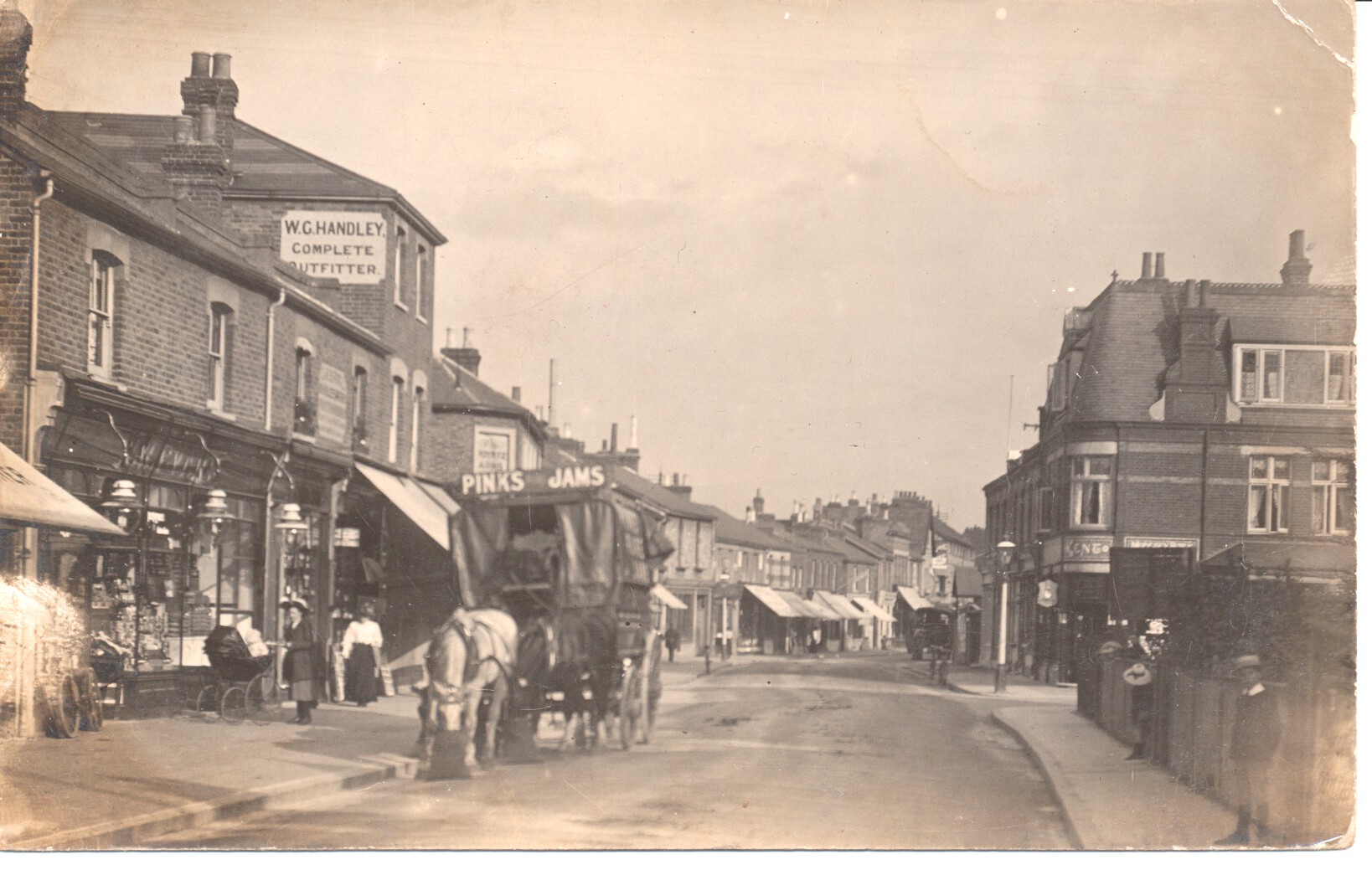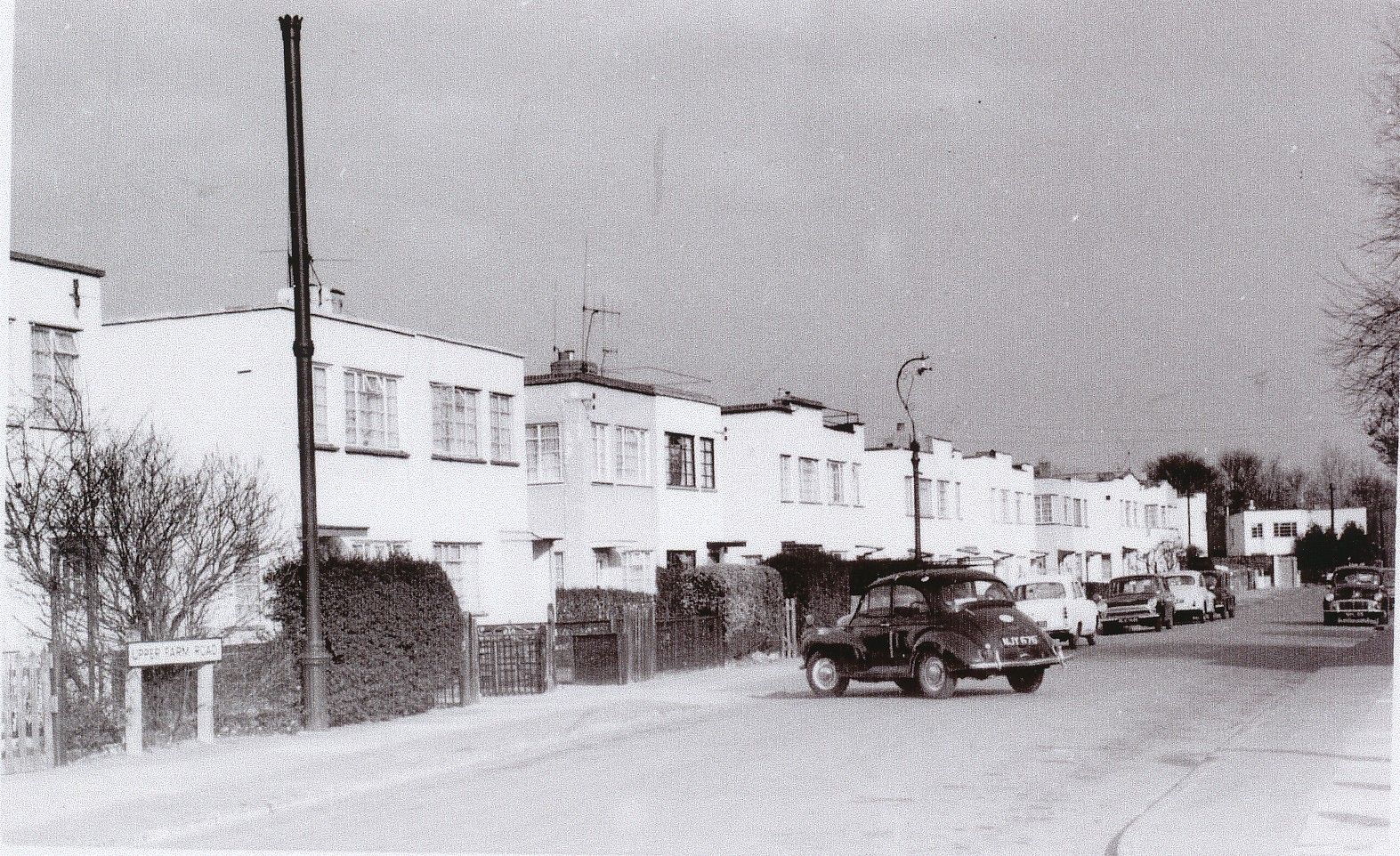| 7th c. |
Saxon settlement on Molesey Hurst ends.
(Giles Pattison) |
| 672 | First mention of Mulesei (Mul’s island or dry ground) in Chertsey Abbey charter |
| 1086 | At the time of the Domesday Survey, Molesey was divided between three lords of the manor. 23 villeins, 8 bordars, 9 cottars and 8 serfs performed services for them. A wooden church existed on or near the present St. Mary’s. The population probably numbered around 200 people. |
| c.1130 | The manorial lands of Engelram d’Abernon gifted to Merton Priory who now own the manor, which comes to be named the Manor of Molesey Priory, for the next 400 years. |
| Early 13th c. |
Upper Mill in the Manor of Molesey Matham and Lower Mill in the Manor of Molesey Prior existed on the Mole. (Upper Mill, a gunpowder mill from the 1650s, was demolished in 1780. In the 19thc. Lower Mill was a corn mill and saw mill). By the early 13th c. the prefixes West and East were in use. (18th c. newspapers also referred to Upper and Lower Molesey). |
| Mid 14th c. |
Around 1330, John de Matham married Isabella de Molesey. Her estate became known as Molesey Matham. The manor house of Molesey Matham was built around this time. (The house with its later, mainly 17th-century, additions still survives at 6 Matham Road). Beginnings of Hampton Court, a large farm estate owned by the Knights Hospitallers of St. John. (It was acquired by Cardinal Thomas Wolsey in 1514 and presented to Henry VIII in 1525.) The tower of West Molesey Church built. It is the oldest surviving structure in the Moleseys.
(Michael Hayes) |
| 1539-1547 |
The manors of Molesey along with a large swathe of manors in Surrey and Middlesex were enclosed by wooden palings and stocked with deer to make the Honour and Chase of Hampton Court, hunting grounds for Henry VIII. Population, trade and farming suffered until the land was restored to its previous uses after Henry’s death. A new road incorporating the present Hurst Road, was created to connect Hampton Court Palace with Oatlands Palace in Weybridge. |
| c.1550 |
A farmhouse was built that became an inn and coach house in the 18th c. (The Bell Inn is now Grade II listed. The first post offices were the Bell in East Molesey and the Royal Oak in West Molesey).
(Michael Hayes) |
| 1753 |
The first Hampton Court Bridge, in the Chinoiserie style, lasted 25 years. (A second bridge, also made of wood, opened in 1778 but by the mid-nineteenth century was no longer fit for purpose. The third bridge which opened in 1865 was made of iron and brick. Tolls were levied from 1753 to 1876).
(Rosemary Moody) |
| Mid 18 th c |
The Hurst, a common meadow, became an important sports venue. Cricket and horse-racing were recorded here in the 1730s. The first known game of golf in England took place in 1758. (Bare-knuckle prize fights attracted huge crowds in the early 19th c. In 1887, the unsafe racecourse was closed down and a new enclosed racecourse was opened on the Hurst. Racing here came to an end in 1962).
(Design for the Heritage Marker on The Hurst) |
| 1815 |
Opening of Molesey lock.
(Michael Hayes) |
| 1821 |
An Act of 1815 permitting the enclosure of the open fields in East and West Molesey came into force. The landscape changed with compact farms concentrating on market gardening and fruit growing to meet the demand from London. |
| 1822 |
The Old Manor House and Quillets Royal in Bell Road (Grade II listed) became the poor house for distressed inhabitants until 1834 when the Moleseys came under Kingston workhouse. |
| 1839 |
A parish elementary school opened in High Street. (In 1860, St. Mary’s School opened in School Road and St. Paul’s School in Park Road) |
| 1849 |
The opening of the railway line from Surbiton to Hampton Court contributed greatly to the transformation of East Molesey. The population grew from 765 in 1851 to 5,119 in 1901. A thriving river leisure industry grew up in the area around Hampton Court Bridge following the opening of the Palace to the public in 1838.
(David Turner) |
| 1850s |
Francis Jackson Kent, a lawyer from Hampton, spotted the potential of the railways and bought up two farms north of the Walton Road to develop as a housing district for the prosperous middle classes. He sold land on the western edge of Kent Town, as the area came to be called, to the Westminster Freehold Land Society which built socially-stratified housing to enfranchise lower middle-class families and tradespeople.
(H.G.Daniels, 1906) (Residential estates in roads that bear their names were also developed by John Arnison and George Hansler in the 1860s and James Feltham in the 1880s. South of the Walton Road, East Molesey Park was sold to property developers in 1876). |
| 1856 |
St. Paul’s Church consecrated.
(Michael Hayes) |
| 1858 |
The Post Office adopted ‘Molesey’ as the official spelling, but for years after, ‘Moulsey’ (a Tudor variant) continued in use alongside the modern spelling. |
| 1865 |
The present St. Mary’s church built in the Early English style replaced the old fire-damaged church.
(Michael Hayes) |
| 1866 |
Molesey Boat Club founded and the first Amateur Regatta was held the following year.
(Michael Hayes) East Molesey Cemetery opened on land in West Molesey and subsequently extended. (In 1895, it became the cemetery for East and West Molesey). East Molesey replaced the Vestry with a Local Board which used to meet at the Bell Inn. (In 1895, East Molesey became an Urban District and was joined by West Molesey in 1897. In 1902, the Council purchased Dundee Villa in St. Mary’s Road as new Council offices. They were demolished in 1969. In 1933, Molesey was merged into the Urban District of Esher. Since 1974, the Moleseys have formed part of Elmbridge Borough Council with Cobham, Esher, Claygate, the Dittons, Walton-on-Thames, Hersham and Weybridge.) |
| 1871 |
East Molesey Cricket Club founded. |
| 1877 |
The present Methodist Church building opened in Manor Road. |
| 1887 |
Molesey boasts the first ever women’s Hockey Club. |
| 1892 |
The Hampton Court and East Molesey Association Football Club founded. |
| Second half of 19th c. |
The Moleseys benefited from social and public health improvements in the late Victorian era including gas for homes and street lighting (1860s), a volunteer fire brigade (1872), water and sewage (1874, 1894), a library committee (1880), the first Molesey hospital in Manor Road (1890), the telephone (1900), a police station (1900) and electricity for homes (1904). |
| 1906 |
St. Barnabas Roman Catholic Church consecrated (Present church opened in 1931). |
| 1907 |
Molesey Hurst Golf Club in West Molesey opened. (The land was sold for housing in 1935). |
| 1911 |
Opening of Island Barn reservoir. |
| 1912 |
East Molesey and Hampton Court Picture Hall opened in Bridge Road (It was re-named The Court Cinema in 1932 and closed in 1958). |
| 1913 |
Suffragettes set fire to the stands at Molesey Hurst racecourse in early hours of 9th June. |
| 1913 |
21 June Opening of Karsino Hotel on Tagg’s Island. (The hotel was demolished in April 1971.)
(Michael Hayes) |
| 1914-19 |
The First World War occasioned much suffering and hardship during and after the War. Belgian refugees were accommodated in the Methodist Church School Hall in 1915. The Royal Flying Corps and WRAF were stationed on Hurst Park. Food shortages were severe in 1917 when rationing started. The war memorials have 146 names of those who died in the Great War. |
| 1933 |
The fourth Hampton Court Bridge was opened by Edward, the Prince of Wales. Its construction involved the demolition of the popular Castle Hotel (1930), alterations to the Mole and Ember and the construction of Hampton Court Way. |
| Inter-War years |
The break-up of West Molesey’s big houses, estates, farms and market gardens accelerated and continued largely unchecked. The Grange, East Molesey Lodge, Hurstside, Ivy Lodge and The Priory disappeared. Cherry Orchard Road is a reminder of the past.
The population of West Molesey increased rapidly with the laying out of new roads and estates for housing. It is estimated that the population grew from 1,500 in 1921 to 5,393 by 1944. The most interesting of the new housing developments was the Howard Houses, affordable housing in the Modernist style.
Molesey Industrial Estate (‘Little Pittsburgh’) built in the 1930s expanded rapidly bringing light industry and employment to West Molesey. |
| 1936 |
Opening of Molesey Hospital in the High Street, West Molesey. Upper Deck swimming pool opened. (The pool closed in 1990 and was replaced by the new Hurst Pool in 1996). Kingfisher Court in Bridge Road built in the Modernist style comprising 60 flats, garages, squash courts and caretaker’s flat (Grade II listed). |
| 1939-45 |
Over a hundred local servicemen, servicewomen and civilians were killed during the Second World War. Local workshops and factories made items for the services. Canadians troops were stationed on the sports ground in Hurst Lane and Americans on Hurst Park. Children from The Orchard School were evacuated to Exeter. |
| Post-War years |
Planning controversies have dominated public debate since the 1960s. Molesey Residents Association was founded in 1963 to oppose plans to build high-rise apartment blocks in Kent Town. The Council acted to protect the historic landscape of East Molesey with the establishment of three conservation areas: Kent Town (1973/1994), Bridge Road (1989) and East Molesey – Old Village (1995).
The continuing demand for housing led to the developments of the Hurst Park, Fleetside estates in the 1960s and the Kings Chase and Bishop Fox estates in the 1980s and 1990s.
The demolition of the last of the Moleseys’ houses of historic interest took place including the Old Manor House in West Molesey (1963), Grove House (1963), Radnor House in the Walton Road (1967), The Grove (1975) and East Molesey Court (1983). |
| 1964 |
Present library opened in Walton Road.
(Royston Pike Collection, Esher District Local History Society) |
| 1968 |
The River Mole flooded in September causing a huge amount of damage across Molesey and surrounding areas. (The Lower Mole flood alleviation scheme got underway in 1974. It cost £19m and took 13 years to complete).
(John Eagle) |
| 1970 |
The Barn Theatre opened. |
| 1977 |
Molesey Carnival revived in Jubilee Year. (in 2020 it was cancelled due to the Covid-19 pandemic.). |
| 1985 |
Closure of Bishop Fox School, the last secondary school in the Moleseys. |
| 1989 |
Hurst Meadows created. |
|
Mole Hall opened in Bishop Fox Way. It became a day centre for the community in 2016. |
|
| The Wilderness sports ground becomes the home of Molesey Juniors Football Club (founded in 1953). | |
| 2011 | The population of the Moleseys estimated at 19,085. |
| 2016 | The last bank in Molesey – a branch of Lloyds in the Walton Road – closed. Barclays in West Molesey closed in 2013. |
| Main sources consulted: East and West Molesey: A Dictionary of Local History by Rowland Baker (Walton on Thames: Greenwood Publications, 1975). The Book of Molesey by Rowland G.M. Baker (Buckingham: Baron, 2006). |
















